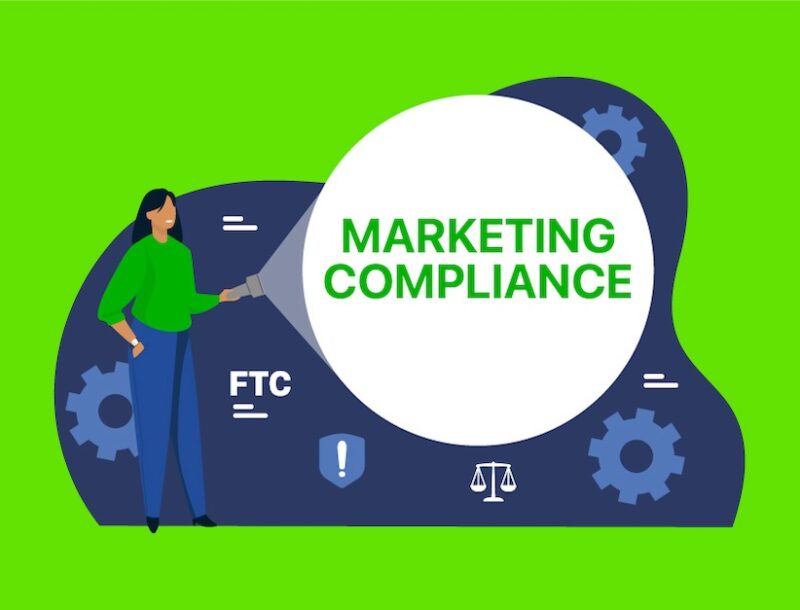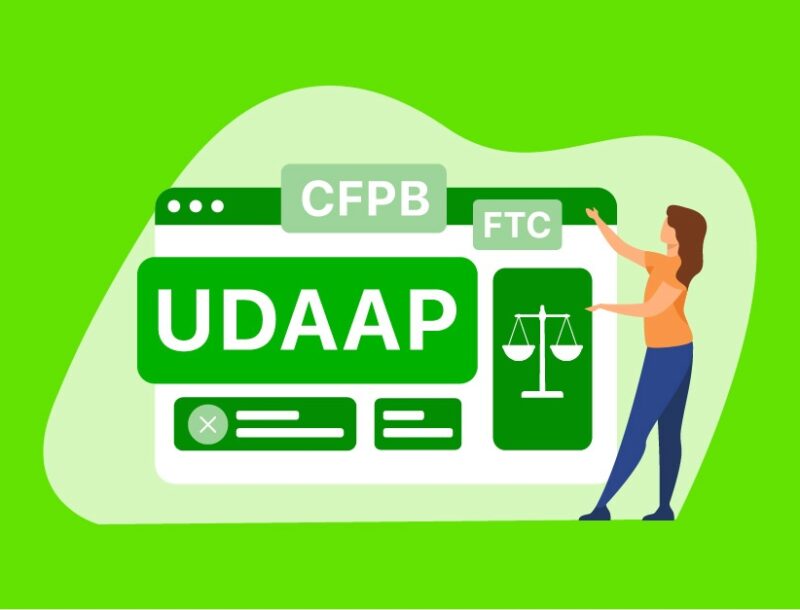Episode 37: Banking on Efficiency: Unveiling the Future of Compliance and Risk with Industry Experts

If you missed our session at Money20/20 this year on The New Era of Banking Efficiencies, you’re in luck. Today’s episode is the second part of that discussion featuring PerformLine’s CEO and Founder Alex Baydin, Harsha Ragunath, Head of Product Compliance at Stripe, and Babette Reynolds, Head of the Enterprise Compliance Program Office at Truist.
During today’s episode, they discuss:
- The prevailing industry theme of prioritizing efficient and profitable growth over growth at any cost, and the crucial role technology plays in achieving more with less.
- The significance of leveraging advanced technology, such as PerformLine, to enhance the efficiency of compliance teams, and how this strategic use of technology facilitates the transition of top performers from task-oriented roles to thought leaders within the organization.
- And finally, the discussion ends with the guests sharing their predictions regarding the future of technology in the compliance and risk sector.
Show Notes:
- PerformLine at Money20/20 USA 2023, The New Era of Banking Efficiencies Recording: https://bit.ly/47AqbE6
- Consumer Complaint and Compliance Trends for Bank-Fintech Partnerships Infographic: https://bit.ly/49XEjJ0
- Why Partner Banks Love PerformLine for Marketing Compliance Blog: https://bit.ly/4acvifB
- Why Banks are Investing in Marketing Compliance Technology Blog: https://bit.ly/3QTpRcg
- 5 Signs It’s Time To Invest In A Marketing Compliance Software: https://bit.ly/3MHGKFx
- Connect with Ashley “AC” Cianci: https://www.linkedin.com/in/ashley-cianci/
Subscribe to COMPLY: The Marketing Compliance Podcast
About COMPLY: The Marketing Compliance Podcast
The state of marketing compliance and regulation is evolving faster than ever, especially for those in the consumer finance space. On the COMPLY podcast, we sit down with the biggest names in marketing, compliance, regulations, and innovation as they share their playbooks to help you take your compliance practice to the next level.
Episode Transcript:
Ashley:
Hey COMPLY Podcast listeners and welcome to this week’s episode. If you missed our session at Money20/20 this year on The New Era of Banking Efficiencies, you’re in luck. Today’s episode is the second part of that discussion featuring PerformLine’s CEO and Founder Alex Baydin, Harsha Ragunath, Head of Product Compliance at Stripe, and Babette Reynolds, Head of the Enterprise Compliance Program Office at Truist.
During today’s episode they discuss the prevailing industry theme of prioritizing efficient and profitable growth over growth at any cost, and the crucial role technology plays in achieving more with less. The significance of leveraging advanced technology, such as PerformLine, to enhance the efficiency of compliance teams, and how this strategic use of technology facilitates the transition of top performers from task-oriented roles to thought leaders within the organization. And finally, the discussion ends with the guests sharing their predictions regarding the future of technology in the compliance and risk sector. Thanks for listening and enjoy!
Alex:
So 2023 has been an interesting year, and one of the things that we all probably hear about in the hallways, in conference rooms of our organizations is growth is growth is still important, but it’s no longer growth at all costs, right? It’s efficient or profitable growth. So I’m just wondering from your perspectives, Babette we can start with you, does technology play a role in helping to control costs and helping to do more with less? And what does that look like at Truist?
Babette:
Absolutely. And so as many of you may know, Truist has been in the news a lot recently for some upcoming cost cutting measures that we are going through right now. And so it’s a real time of focus for us as we now have merged these two banks together to really seek more efficiency opportunities from the merger. But as we are doing this, the regulatory environment is continuing to increase in the level of intensity. And so we really do need to find ways to be more efficient in how we are managing our risks, but really always focused on the fact that one of our core values is caring for our customers and providing our customers with innovative products and opportunities, but we’ve got to do those things while complying with the regulatory expectations. And so we are looking at too in the compliance department at some opportunities to move from manual testing as an example and manual monitoring activities where we are looking at a very, very small sample size to implementing automated full population testing that can be run instead of once a quarter, we can run on a daily basis as an example.
Babette:
Also specifically we are talking to PerformLine about using their product to enable us to do an automated approach to managing our marketing materials and scanning the internet to see where our offerings online as they are viewed by customers may not be adhering to the new interest rates that we are providing or some of our other terms around privacy or those types of things. And so looking for those opportunities is going to help us be able to actually do more from a risk management standpoint and have it be much more cost effective. And through that, we think that helps us reinforce our commitment to the values of caring for our customers.
Alex:
Awesome, thank you. So Harsha, Stripe’s Banking as a Service offering powers your partners to offer direct access to financial products and services that your customers already kind of have a trust level with. So this is perhaps corporate cards or financial deposits, accounting. And staying on the technology theme, like where do you see technology come in to help you be good stewards of that trust? Because a lot of your growth is based on the success of your partners.
Harsha:
Absolutely. I think there’s a unique compliance challenge with BaaS. In that what we are building is infrastructure products to allow the next SaaS platform to become a fintech, right? And so we take very seriously the fact that they are trying to innovate and we in compliance kind of have to be one step ahead of their innovation to understand the risk that they might create for our program.
Harsha:
And so for us leveraging some kind of emergent technology and tooling is critical for us to be able to operate this at scale and have the sort of wide user base that we want to have as we grow and scale. I think the other piece is we are a technology driven company. We are technology first on almost everything. So the question becomes, okay, how do we build compliance into the product itself? Are there APIs that we in compliance can advise on to help a customer or a user manage their compliance risk, whether it be sending them and generating compliant regulatory disclosures or ways to sort of aggregate and report on customer complaints, be being able to sort of enforce fees and rewards that our users are offering to their customers and making sure that, we are managing risk like UDAAP risk along the way.
Harsha:
So I think one is in the product you got to find ways to actually build compliance into the product. I think two is figuring out, and I might expand the question to say technology and data to figure out what do we have internally that we can leverage from a data perspective to be able to understand who is using our product and for what. And a lot of times we want to be able to understand and detect changes in a user’s business activities or patterns of behavior, so we know whether or not that activity is supportable. And so for us in compliance, having access to data and access to data scientists is sort of critical as well.
Harsha:
Speaking to the sort of externally facing side of our products, how do we get comfort that the fintechs that we are enabling are sort of, they are representing the product correctly, they are branding it correctly, they are talking about it the right way, working with, web scraping and web crawling tools like PerformLine to help us understand kind of who’s talking about us and who’s talking about our products, where on the internet, so we understand how and have a means of of enforcing. And then the third bucket is the enforcement itself. So how do we actually have mechanisms to do something about it, if we detect an area where we’ve got to work with a user to improve their marketing activity or change a disclosure on a UX and things like that.
Harsha:
So for us, leveraging technology to ingest exceptions and rules that trigger an alert out on the internet, and then being able to triage them on a risk adjusted basis, and then filter that into workflows to be able to manage that. That is the only way we do this thing at scale. It’s not something that we can man handle in spreadsheets and on a manual basis. It’s got to be something that is built into our platform, it’s built into our systems and we are able to sort of do it with the right number of full-time employees and not an army of compliance people, like traditional financial services institutions sometimes have to do.
Alex:
Yeah, that theme of right sizing the compliance team for growth is really important. And sometimes we will get asked when we are talking to a prospective customer, does this mean I can free up head count or, if I have your technology, do I have to find some unlucky souls to maybe part ways with, and we always say no. We want to be a tool to make them more efficient and to maybe be able to transition some real all stars that you have from going from task employees to thought employees, right? So if you can leverage technologies like PerformLine or others to discover and score mass amounts of data and really you’ll never, I don’t think gonna be able to, maybe there’s a future state, but there is a man machine problem and solution, but how do you get the right people making decisions on that data and have fewer people just kind of staring and comparing and reviewing. And I think that is where companies really start to see that cost savings. Do you guys have anything to add, have you have seen that in your business? Are there any examples of that sort of thing?
Babette:
Yeah, absolutely. We are having these discussions now, as I mentioned before the smaller banks that were the precursors to Truist had a lot of focus on manual processes, manual testing, manual monitoring, so by definition, small population sizes for the samples but also very labor intensive. And so those folks really weren’t able to kind of take a step back and look at what are the themes and trends that we are seeing, because they are so focused on getting the next set of tests done, reviewing those 80 samples or whatever it might be. And so what you’re sharing, Alex, I think really resonates with me, and the conversations we’ve been having internally, is we really need to be able to take those folks, free that headcount up from doing those kinds of tasks, which can be done more comprehensively, more effectively in an automated way.
Babette:
And also can tell us more about the themes and trends. If you’re looking at, for example, a million transactions instead of 80 and free those folks up to be looking at the themes and trends and be really applying their time to more value add. Because really we need to be looking at not only the individual kind of exceptions that we see and addressing those from an individual customer standpoint, but what are the themes and trends telling us about what’s coming next and where we might have some more systemic kind of things that we need to address. And if you aren’t freeing folks up to do that you’re gonna miss those types of things. And so I kind of chuckled when Alex said, because we have those same discussions, our senior leadership will come and say, okay, great, if we do this, then we are gonna free up what 10% of your headcount. And I have to say to them, well, no, because we are not even doing these other things that we need to be doing. And so it’s a constant conversation from that standpoint.
Alex:
Alright, well speaking of what may be coming next I would love to have our discussion expand a little bit to maybe predictions or next year at Money20/20 or years beyond what we think some of the themes might be as it relates to technology and compliance being able to create efficiencies with technology in the compliance and risk sector. Whoever has some thoughts on that to start is welcome to.
Harsha:
Yeah, I think some of the conversations I’ve had with partner banks either here or over the last few months focus on, sort of we’ve talked a little bit about regulatory guidance around third party risk management, but also we know that the Fed is taking greater interest through its novel activities supervision program.
Harsha:
So we are gonna expect to see, I think, one a greater scrutiny on these types of partnerships, making sure that compliance functions are right sized and between the partner bank and the fintech partner what does the compliance function kind of a amount to and the risk functions amount to and making sure that they are built for the scale and the growth that we are seeing in the marketplace. So I think we are gonna see that, but I also think we are going to probably see the regulators take a greater interest in the actual technologies we are using. They are gonna ask us questions about, are you doing this in-house or you’re going external? If you’re doing it in-house, who’s advising the teams that are building those things? To make sure that we are actually building compliance tooling that is fit for purpose and fit for scale. So that is probably where I see more scrutiny, more clarity, but also kind of opportunity for us to kind of demonstrate just kind of how sophisticated our programs have become over time.
Babette:
Yeah, I agree with all those comments. I would also add, I’ve heard in a few conversations or presentations from regulators, them emphasizing that they don’t intend to create some new regulatory regime around these technological advancements because they believe that the regulatory requirements that are already out there apply to all of these new technologies. And so if you think about, for example, AI and then generative AI, and it’s a bit of a big topic of the conference this year, the UDAAP in fairness type requirements, consumer protection, data protection, those regulatory expectations already exist. And what the regulators I hear them saying is, apply those to any of these new capabilities that you launch, because those things apply. What I would also say though is on the flip side, from an internal standpoint, I think they are going to expect the banks to be using more of these capabilities to conduct internal risk management activities.
Babette:
And so one of the things that I think having been at several large banks, I think for what I know, my fintech friends out here we like to call the historical banks, the large banks we have data quality problems, right? Because we weren’t built to be digital first. And so we’ve, in some cases, the banks have grown through mergers. So it means you acquire different data systems and platforms and databases and trying to create data lakes to kind of bring the data together. And what you just find that it’s hard in some cases, find all the data that you need to use some of these innovative capabilities. And in some cases, even if you can find it, the quality isn’t there because it wasn’t governed and overseen in preparation for using it in these ways.
Babette:
And so that is a hurdle that the large banks are gonna have to face and are facing and the regulators are pushing us hard on that. So I would say for the large banks continuing to address the data quality concerns. And then I would say I just think Generative AI is going to be the next thing. And I think especially in one of the conversations I heard yesterday the Generative AI, likely the regulators are gonna want to make sure that we are not using that to make the final decisions, for example in the underwriting context, but using it to prepare the data, classify the data, and summarize it in a way that you can not have that be done manually, but you can have the decision makers be able to leverage that broad set of summarized data to make the right decision for the customer in alignment with all the regulatory requirements.
Harsha:
Yeah, I think you drew a really good distinction, right, between the sort of, the use of Generative AI for business functions and customer related functions. I think that the second point you made about like, how can we actually use it within our compliance functions for oversight purposes? That is the part that probably for us is really interesting because that is what’s gonna help us slow that headcount growth. I was just thinking the other day, and we’ve been talking to a few sort of AI startups out there about how can we leverage Generative AI for things like conducting diligence on our potential fintech SaaS platforms that want to use our BaaS products, thinking about policy procedure reviews and having the first sort of line of defense be a Generative AI tool that can flag for us that and say hey look at this procedure actually is presents some fair lending risk, or UDAAP risk, or whatever it might be.
Harsha:
Leveraging that to help us kind of scale back our headcount growth and be able to manage exceptions rather than the actual process itself, I think is gonna be critical and something that we are really excited to explore in the coming years.
Ashley:
Thanks for listening to this episode of the COMPLY Podcast! If you’re interested in watching our entire session from Money20/20 this year I will drop a link to that in today’s show notes. And if you’re a fintech or a partner bank looking to learn more about how to be proactive in your partnerships when it comes to compliance, I have several resources that I’ll also drop in today’s show notes for you.
I also have a special announcement, this will be my last time being your COMPLY Podcast host. Starting next year our very own, Rhonda McGill will be taking over as your host! Rhonda has been one of our frequent guests on the podcast and we are so excited to have her step into this role.
As always for the latest content on all things marketing compliance you can head to content.performline.com. And for the most up-to-date pieces of industry news, events, and content be sure to follow PerformLine on LinkedIn. Thanks again for listening and we will see you next time!


